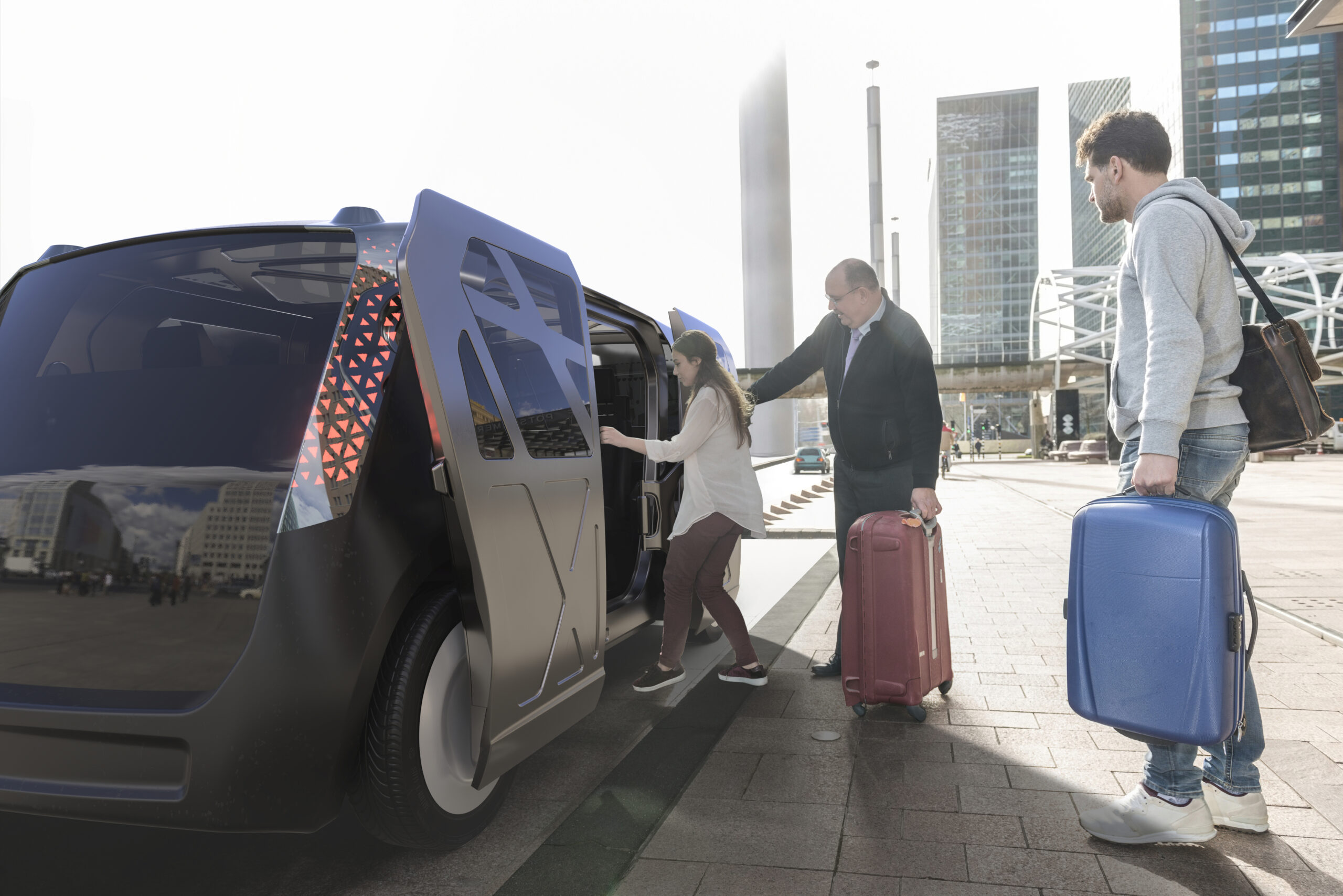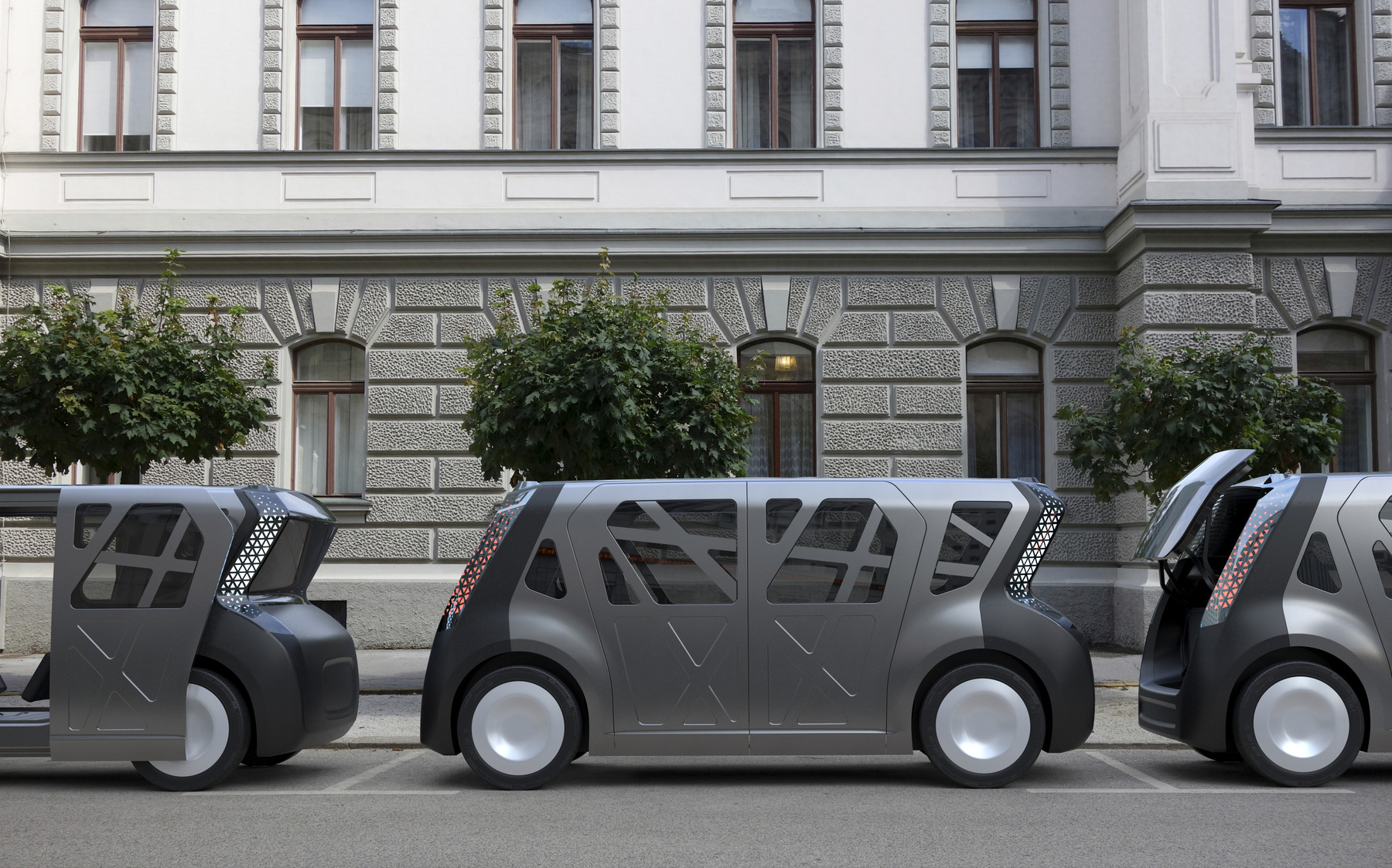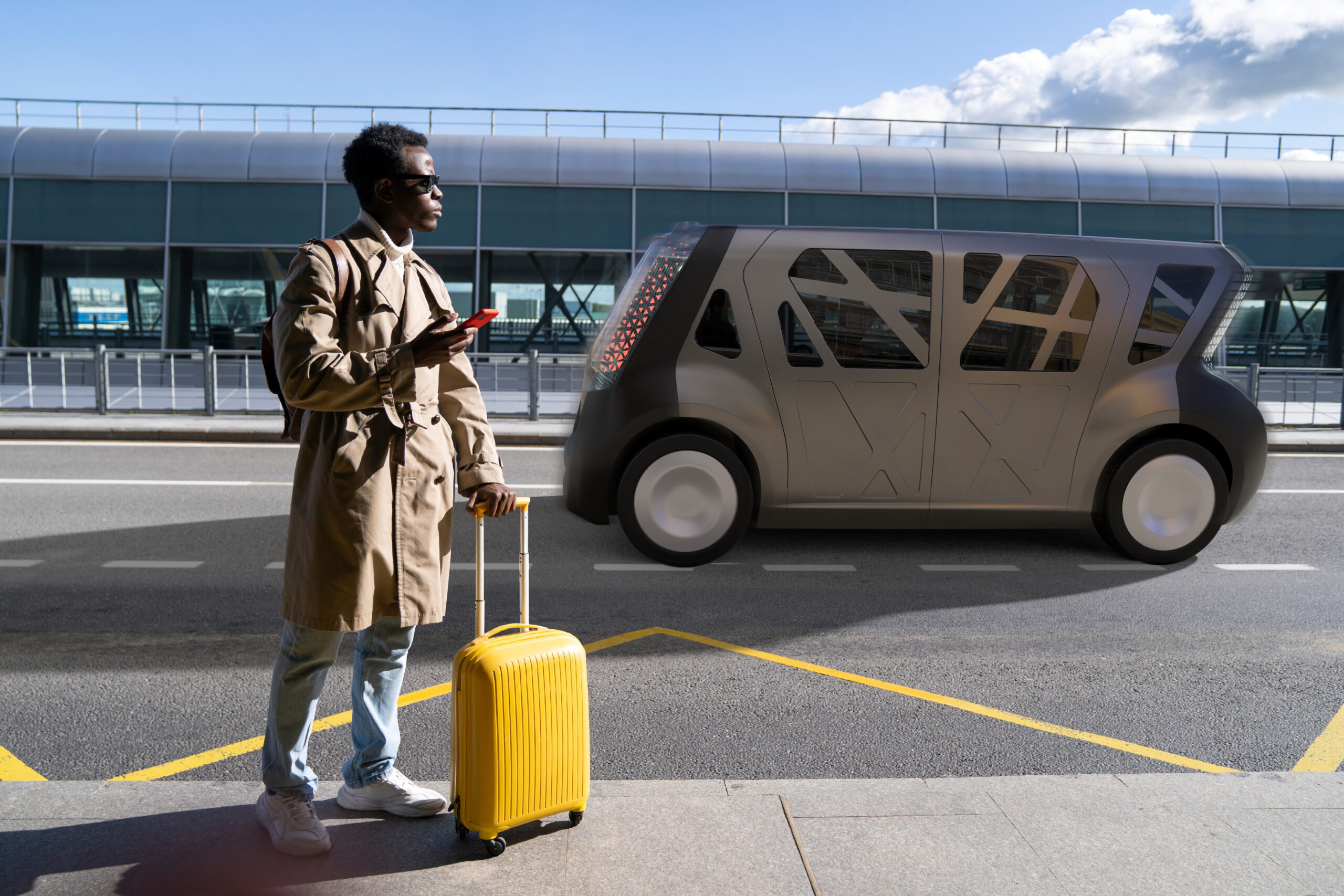Latest advanced steel innovations offer a pathway to safe, comfortable, low-emission mobility
Download PDF of this release (English)
Download these images here.
November 9, 2023, Los Angeles – The future of mobility is changing. The cities of tomorrow will require passenger transport solutions that are not only autonomous, safe, and inviting, but also affordable, efficient, and with low emissions.
The Steel E-Motive concept – one of the world’s first battery-electric vehicles designed specifically as an autonomous ride-sharing solution – can play a vitally important role in smart cities of the future. Showcased at CoMotion LA November 14-16, Steel E-Motive utilizes Advanced High-Strength Steel (AHSS) innovations designed to support the advancement of Mobility as a Service (MaaS) ride-sharing strategies.
Steel E-Motive enables an appealing and affordable journey for occupants, while delivering low total cost of ownership and emissions performance for the mobility service provider. With a comprehensive plan for emissions reduction strategies, the concept enables a path forward towards Net Zero Emissions.
Steel E-Motive is the culmination of a three-year research program led by WorldAutoSteel in partnership with global engineering firm Ricardo. The full engineering report detailing the design efficiencies and how they were achieved is offered freely to the industry to study and adopt for near-term and future vehicle applications. Key aspects of the program include:
- Up to 86% reduction in total lifecycle CO2 emissions compared with a reference 2022 battery-electric vehicle (based on anticipated 2030-2035 production)
- Ability to meet or exceed key global high-speed crash standards (e.g., IIHS “Good” rating)
- 27% weight reduction without compromise to safety, 282 kg. body structure weight compared to expected 374 kg. benchmark
- Affordable production and high-volume manufacturing using existing infrastructure
- Purpose-fit design that offers passenger comfort, accessibility, and safety

The Steel E-Motive design features a wide and low door aperture for easy ingress and egress, providing greater access for all passengers.
Passenger Comfort and Safety – Key Factors in Steel E-Motive Design
Level 5 autonomy removes all driver interfaces, freeing up space for additional occupants to share rides, which has the net goal of reducing the number of vehicles on the road. To make this transition successful, vehicles must provide a safe, comfortable experience for passengers. These considerations were key aspects of the Steel E-Motive design, which features a wide and low door aperture for easy ingress and egress, providing greater access for all passengers, including wheelchair users, and meets stringent global crash requirements. The concept offers two designs, comfortably accommodating as many as six occupants and luggage.
“Steel E-Motive addresses global mobility trends such as urbanization – which yields congestion, pollution, and limited/costly parking – and changing attitudes towards vehicle ownership,” said George Coates, Technical Director, WorldAutoSteel. “Thanks to the benefits today’s modern steels can provide, autonomous mobility as a shared service can be the comfortable, economical, and sustainable transport solution of tomorrow.”

Steel E-Motive is a fully autonomous ride sharing vehicle concept showcasing the strength and durability of steel with a critical focus on sustainability for reaching net zero emissions targets.
Advanced High-Strength Steels: The Materials of Choice
With sustainability as a key consideration, automakers have critical decisions to make when it comes to designing vehicles of the future. AHSS is the only automotive material that has a reduced environmental impact in all three key phases of the vehicle life cycle: manufacture, use, and end-of-life. It provides a number of sustainability benefits demonstrated by the Steel E-Motive concept:
Manufacturability: The automotive industry is increasingly focusing on the manufacturing stage of its materials to drive down the overall lifetime emissions of their vehicles. Steel already scores well in its primary production: alternative materials have emissions that are between six and 17 times higher at this stage. By 2035, a significant proportion of the steel in a vehicle’s construction is expected to be manufactured using decarbonized production methods.
Lightweight: Steel E-Motive’s use of an AHSS body structure achieves a 27% mass reduction in the body structure – from an expected 374 kg to 282 kg, competitive with multi-material vehicles. This not only means fewer emissions due to lighter weight, but less material production and emissions overall. Additional weight savings are derived from intelligent battery packaging that is 37% lighter than average reference battery pack structures at 27% less cost.
End of Life: MaaS will require vehicles to have a longer service life, at least twice the life of consumer-driven vehicles, which Steel E-Motive can make possible through AHSS’s fatigue-resistant and durability properties, together with a design that enables easy replacement of battery modules.
Cost: With an engineering focus on minimizing material thickness, scrap, and the use of very efficient steel manufacturing processes, Steel E-Motive’s body structure is projected to cost US$1632, which is 30% lower than expected based on its reference vehicle.
“The Steel E-Motive concept demonstrates that steel is thoroughly fit for purpose in the future mobility landscape. Steel can and must play a part in the emissions-reduction discussion. This program shows what autonomous, steel-based, ride-sharing vehicles used within a green grid can do to significantly reduce CO2 emissions,” said Russ Balzer, ACLCA, Technical Director of WorldAutoSteel’s Life Cycle Assessment programs.

Vehicles like the Steel E-Motive concepts can fill community needs, such as last-mile and accessible transportation, with safe, sustainable and affordable solutions.
Steel E-Motive at CoMotionLA
Wednesday, November 15, 2:35 PM – 3:25 PM PST
Panel – The Sustainability of Rideshare: George Coates, Technical Director, WorldAutoSteel, participates in a panel discussing the challenges of urban sprawl, climate change, and rising energy costs make it clear that future mobility must offer alternatives to private car ownership, and rideshare is a key component to decreasing the number of people who must rely on their own vehicles. But as rideshare shifts and evolves to incorporate new electric and autonomous technologies, what are the challenges to truly making this mode sustainable and what creative design and policy solutions are being developed to address those challenges? Learn how leaders in the space are working to resolve the core obstacles to reductions in private vehicle usage, like solving electrification infrastructure and land use problems and designing better, cheaper rideshare.
Wednesday, November 15, 4:00 PM – 4:30 PM PST
Fireside Chat – Autonomous Ride Sharing Vehicles: Designing for safe and sustainable transportation: While software has captured much of the attention in innovative and clean mobility projects, integrating existing materials and greening them is a crucial step to decarbonization and hitting emission targets. Neil McGregor, Chief Engineer, Vehicle Systems Integration, Ricardo Automotive and Industrial Division, EMEA, will participate in a moderated conversation on the future of sustainable mobility design and its intersection with steel manufacturing, with a special focus on automotive design.
About the program
Steel E-Motive is the latest in a series of steel industry demonstrations over the past 25 years that showcases new AHSS applications for automotive structures. WorldAutoSteel led the Steel E-Motive project, working closely with Ricardo, who managed the overall engineering design, testing, and development. Full details of the analysis can be found in the Steel E-Motive Engineering Report, which can be downloaded freely at here.
###
About WorldAutoSteel
WorldAutoSteel, the automotive group of the World Steel Association, is comprised of 18 major global steel producers from around the world. Our mission is to advance and communicate steel’s unique ability to meet the automotive industry’s needs and challenges in a sustainable and environmentally responsible way.
About Ricardo
Ricardo plc is a global strategic, environmental, and engineering consulting company, listed on the London Stock Exchange. With over 100 years of engineering excellence and employing close to 3,000 employees in more than 20 countries, we provide exceptional levels of expertise in delivering innovative cross-sector sustainable outcomes to support energy transition and scarce resources, environmental services together with safe and smart mobility. Our global team of consultants, environmental specialists, engineers and scientists support our customers to solve the most complex and dynamic challenges to help achieve a safe and sustainable world. Visit www.ricardo.com.
